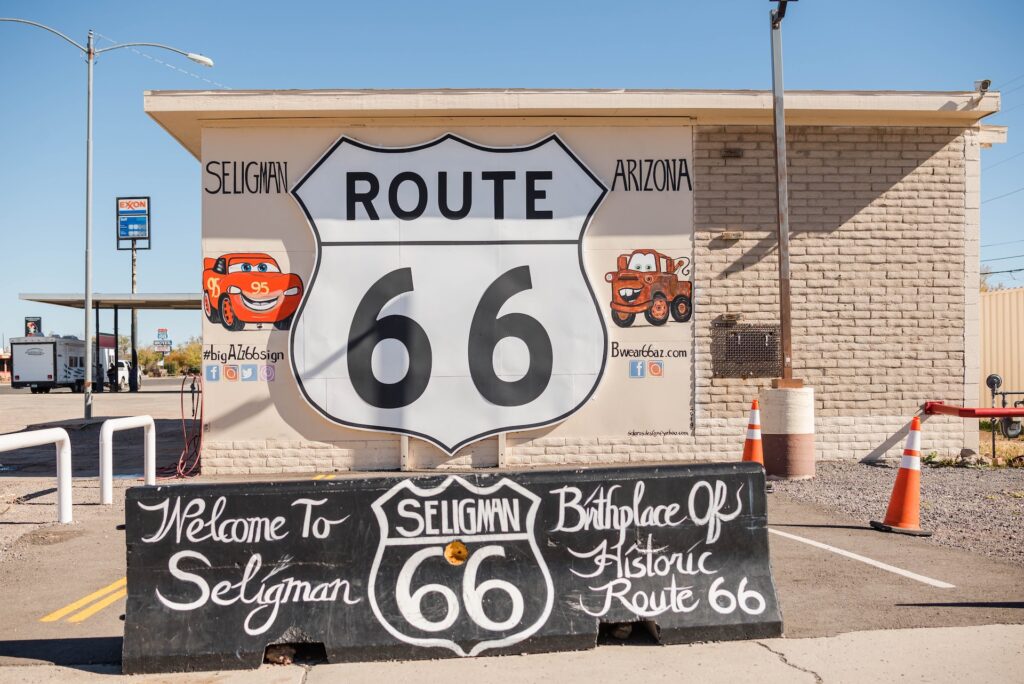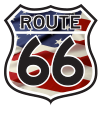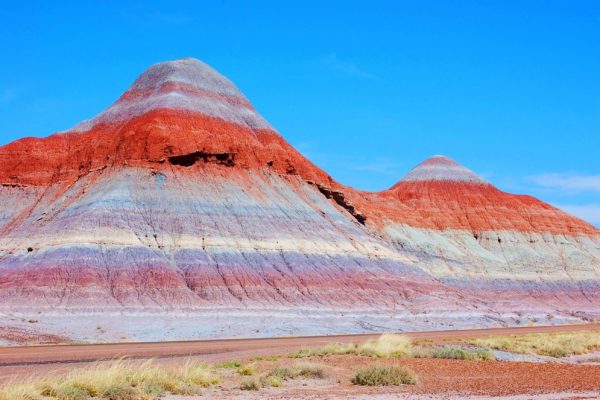

You don’t need to be a road trip warrior to have heard of Route 66. Of the approximately 3.9 million miles of asphalt that crisscross the United States (41,000 of which is highway, according to federal data) it’s fair to say that none is more well known than iconic Route 66. Affectionately known as “Mother Road” to some (thanks largely to noted author John Steinbeck and his timeless tome) and “Main Street of America” to others, Route 66 was among the nation’s original highways, stretching an impressive 2,448 miles from the heart of the Midwest to the West Coast. It also combed its way through eight states, starting in eastern Illinois and culminating in California near Santa Monica. It was the very first highway linking Los Angeles to Chicago.
But since the original highway was officially decommissioned in the mid-1980s, you may not know if Mother Road is located in a state near you or that you plan on travelling to or through. For example, if you intend to visit Arizona on an upcoming road trip or will be taking an Arizona route, you may wonder if historic Route 66 even goes through there anymore.
The short answer? Yes, the old route most certainly does. But there’s a whole lot more to this fact than you realise. Understanding its rich history with the Copper State may give you a better appreciation for why so many people love to come to Arizona, if for no other reason than to see in person a major landmark — and the many others that flank it.
A brief history of Route 66 Arizona
Covering more than 400 miles of terrain, Route 66 in Arizona was one of the original states that Route 66 ran through when it was first built in 1926 (even though much of it hadn’t been paved yet). Given its length, it’s not surprising that it originally passed through a number of different cities and towns in and around the Grand Canyon State. These included Oatman, Kingman, Seligman and Williams, a tiny town that is just west of Flagstaff.
Even in its relative infancy, Route 66 was destined for historic route status. In 1939, for example, Nobel Prize-winning author John Steinbeck in his novel “The Grapes of Wrath” weaved Route 66 into his storytelling when describing some of the adventures — and misadventures — of the novel’s main characters burdened by the harsh economic effects of the Great Depression. Here are a few short passages:
“Highway 66 is the main migrant road … 66 is the path of a people in flight … 66 is the mother road, the road of flight.”
Steinbeck uses Route 66 as a literary device to symbolise both opportunity as well as adversity, given that the story takes place during the height of the Great Depression and the novel’s protagonists are relocating to California from Oklahoma in the pursuit of a fresh start. In this way, Route 66 represents a bridge, of sorts, to a better life and doing whatever it takes to get there.
Route 66 remained a major thoroughfare of the Copper State for the better part of over 50 years, but it was decommissioned by the Arizona Department of Transportation once Interstate 40 was built. While it no longer is part of the United States’ highway system, it remains a crowning jewel of Arizona and has been preserved by the Arizona State Transportation Board and the efforts of small-business owners in the area, eventually leading to the formation of the Route 66 Association.
While I-40 has largely replaced much of the original Route 66, that doesn’t mean you can’t still access portions of this historic route in Arizona. While the Mother Road itself is an impressive sight in its own right, there are several other iconic locations surrounding it that make Route 66 a must-see on your Arizona journey.
1. Petrified Forest National Park
Home to the Rainbow Forest and lying within the Painted Desert, Petrified Forest National Park is a national treasure. Conveniently located between I-40 and Highway 180, the park happens to be the only national park that contains a portion of the original Route 66. Petrified Forest is an outdoor enthusiast’s paradise, replete with hundreds of species, plants and animals that are rare in other parts of the country, but fairly common in Arizona. These include bullsnakes, meadowlarks, prairie dogs and Arizona tiger salamanders.
The park is also quite expansive, spreading out over 221,390 acres, roughly 50,000 of which are designated as wilderness territory. At over 160 miles, it flanks the eastern side of the Grand Canyon and Grand Canyon National Park. With approximately 800,000 people visiting the Petrified Forest each year, this national park is one you’ll want to check off your list.
2. Holbrook Wigwam Motel
If you’ve never been in a wigwam before — which is Algonquin for “house” or “their house” — you’re sure to love the Holbrook Wigwam Village Motel. Located in a town called Holbrook, the Holbrook Wigwam Motel is not only a landmark that recalls Native American heritage that is steeped in Southwestern Americana’s culture, it’s also a place you can actually stay at overnight if the mood strikes you. It has hosted guests from all over the world since it was originally opened for business in the 1950s. And yes, the wigwam motel is located right along historic Route 66, roughly seven blocks west of Holbrook’s downtown area. Newly renovated, Holbrook Wigwam is the perfect blend of the contemporary with the historical, hearkening back to the Plains Indians and precolonial times.
3. Winslow
With a population of only around 10,000 people and just 13 square miles of land area, this Northern Arizona city may not seem especially noteworthy. But anyone who lives in Winslow knows it’s rather famous. In addition to the fact that Route 66 ran through Winslow, the city is referenced in the 1970s classic “Take It Easy” by Rock & Roll Hall of Fame of legends the Eagles.
There’s even a mural at Corner Park, where the rock band sang they were “standin.'” It’s also a great place for anyone who loves history as Arcadia Hall, La Posada Hotel and the Lorenzo Hubbell Trading Post and Warehouse are a few of the historic places that are registered as such by the Department of the Interior.
Other worthwhile take-ins on Route 66 include Lake Havasu City, Joshua Tree National Park and Two Guns, which is a ghost town at Canyon Diablo.
4. Meteor Crater
Thousands of meteors strike the earth in any given year, but few left as lasting an impression — quite literally — as the one that hit tens of thousands of years ago. Situated along Route 66 is Meteor Crater, believed to be the best-preserved meteor impact site in the world, let alone the U.S. There are several telescopes throughout the area that provide added perspective of the meteor’s impact and breadth, which stretches nearly a mile wide. The on-site discovery centre also offers education and entertainment for adults and children alike.
Historic Route 66 should be on everyone’s bucket list, but if you’re looking to get the most out of your next road trip, Route 66 Tours has you covered. With trips happening in the spring, summer and fall, Route 66 Tours is the best way to maximise all that there is to see of Mother Road, mother nature and so much much more. We travel an average of 177 miles per day, while on 66 (14 days), and 277 miles per day when not on 66 (8 days), ensuring you get to fully experience the interstate road trip you’ve been dreaming about. Book your adventure today. We’re confident you too will come back for more.







